
In March 2021, the Land for Wildlife program in SEQ reached a milestone with the registration of our 5000th property. Congratulations Timotheos Firestone on being our 5000th LfWSEQ member and thankyou for your commitment to conservation.
We thank Land for Wildlife members Sandra and John Field for hosting a celebration event on their Cedarton property in June. They only joined the program last year, but have already cleared swathes of lantana and are learning about the native plants and wildlife that call their property home. They are shown here with Timotheos. We congratulate all new and long-term Land for Wildlife members.
I care a lot about nature and leaving the environment better than I found it. I joined the Land for Wildlife program as I heard it meant I could get free native trees and a sign that would show visitors what I’m doing, but I’ve since found it offers so much more than that. The wealth of knowledge, various useful events, and meeting wonderful other people in the Land for Wildlife community can’t be underestimated.
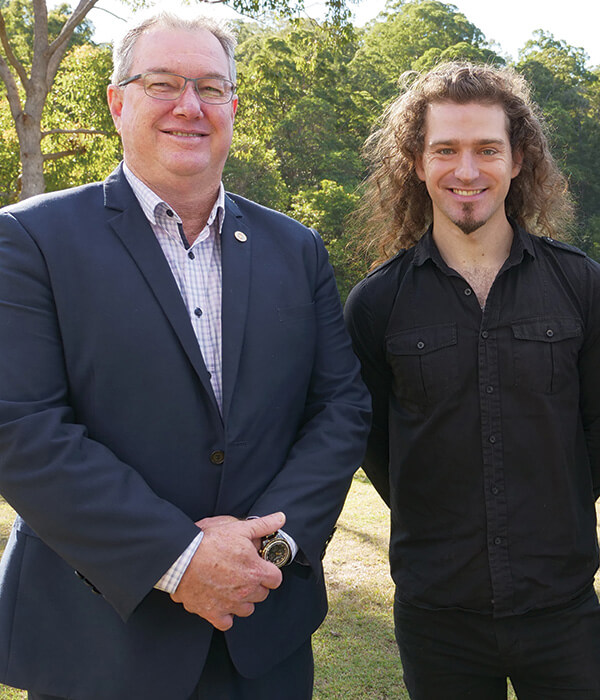
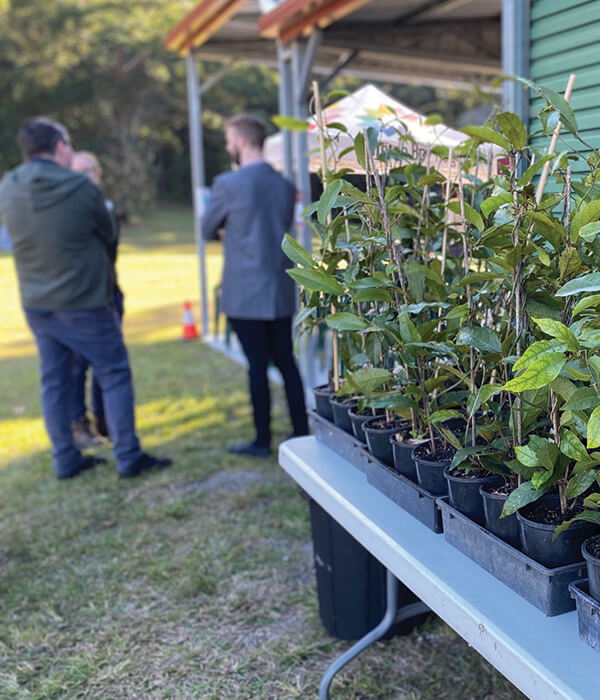
A few months after joining the program, I was told that my property was the 5000th Land for Wildlife property in SEQ. I feel very proud and privileged to be here and I have great respect for the 4999 property owners who have come before me.
I have owned my 70ha property on the eastern foothills of the D’Aguilar Range for one and a half years. Over that time, I’ve cleared out a kilometre of the worst Lantana and Giant Devil’s Fig from the seasonal creek, although it’s a constant battle to maintain that. I’ve planted some native plants including the Richmond Birdwing butterfly host vines that I received from a Land for Wildlife event. I’ve also released a few rescued and rehabilitated brushtail possums with my friend Jess and the Pine Rivers Koala Care Association.
Learning the ecosystems is such an important conservation goal. Managing the property absolutely requires an active, working knowledge. Conservation is a lot more complicated than ‘plant 100 trees’ because, as per the Land for Wildlife report for my property, there are different ecosystem types even just within the one property. There are so many plants, birds, frogs, insects, weeds, natives, fungi, etc., to identify and then know how to respond to. Learning about fire and its use in land management has been very eye-opening, especially as a programmer from the city.
I have really loved building a relationship with the land and its inhabitants. I come back to a tree after a few weeks and see that it has grown. I’ll always smile when I see the Brush Turkey who my friend Grace and I removed a paralytic tick from. Turkey is pretty relaxed around me now. I love hearing a clang at night, to step out and see the local bandicoot embarrassingly falling over a plant pot. Everything has so much character when you look for it.
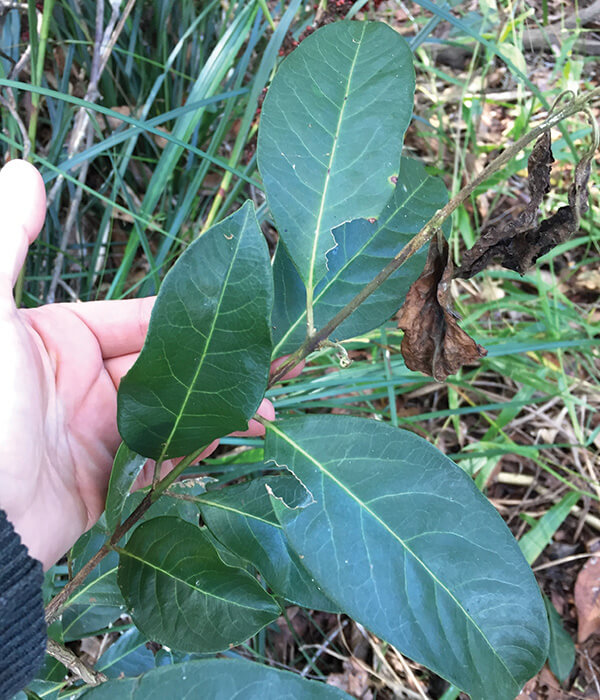
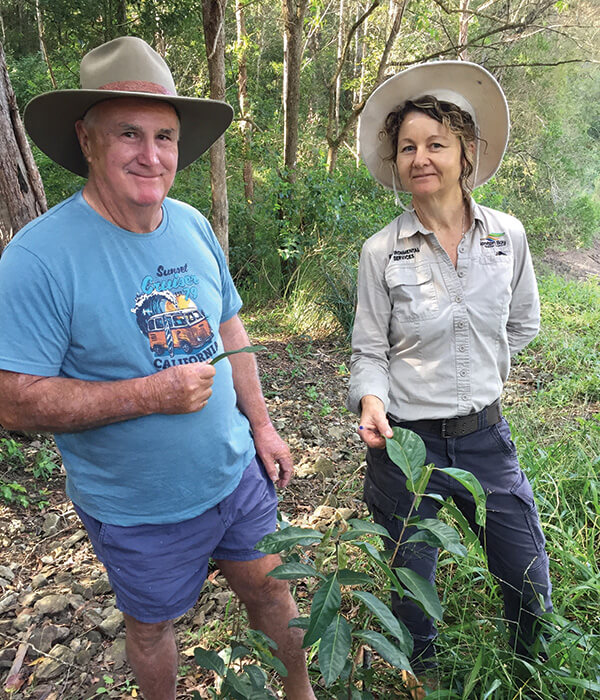
As much as I wish the place was already pristine, I also enjoy that I can justify running around with a scythe or machete because the property is so choked up with weeds. The land needs me as much as I need it. It’s heart-nourishing to explore and find things: mushrooms growing out of tiny cracks in rocks, species I haven’t seen before, a staghorn hiding under vines, bioluminescent fungi or edible berries on the native mulberry. It’s like finding treasure.
When I bought the place, I was told there was a dry creek, but I’d never even seen it. One day, after a lot of rain, I took my machete and followed the sound of running water, cut through a thick wall of Lantana, and found this gorgeous mini waterfall and rock pool.
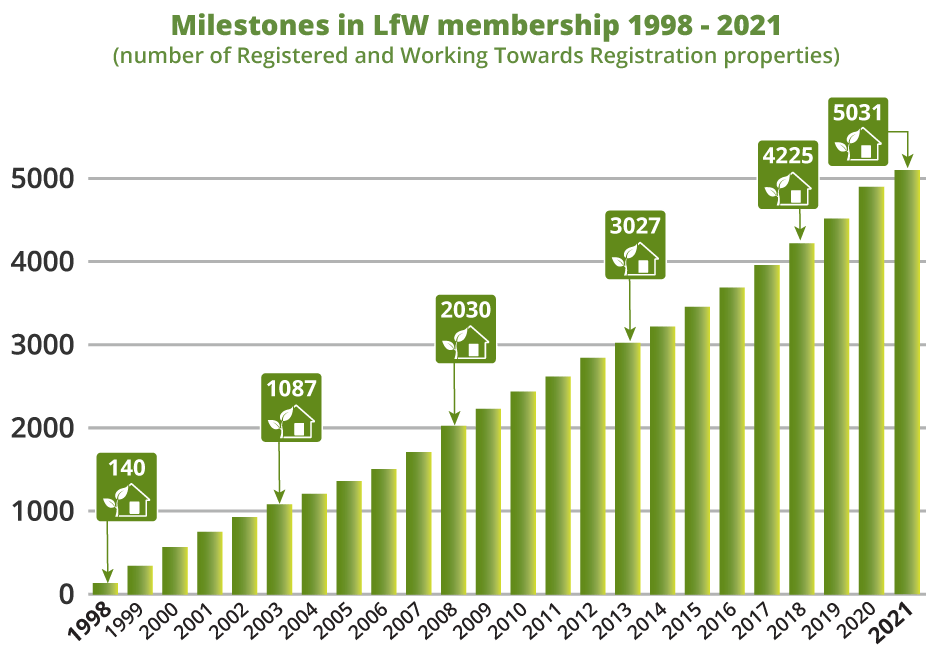
I truly believe we are meant to be in nature, as humans, and it’s psychologically beneficial for us to learn to find our place in it. Once you’ve been still for a while, and the wildlife stops seeing you as an intruding predator, it’s really amazing what comes out. Just recently, I was sitting in between the buttress roots at the base of my favourite strangler fig, and a Noisy Pitta came right up to me. It would hop a metre closer, look at me, hop again, until it came within a metre or two. It’s a really gorgeous, colourful forest bird.
We can all get so caught up in the human world, but I feel very complete when I’m secluded deep in nature.
Timotheos Firestone
5000th Land for Wildlife SEQ member
Laceys Creek, Moreton Bay
